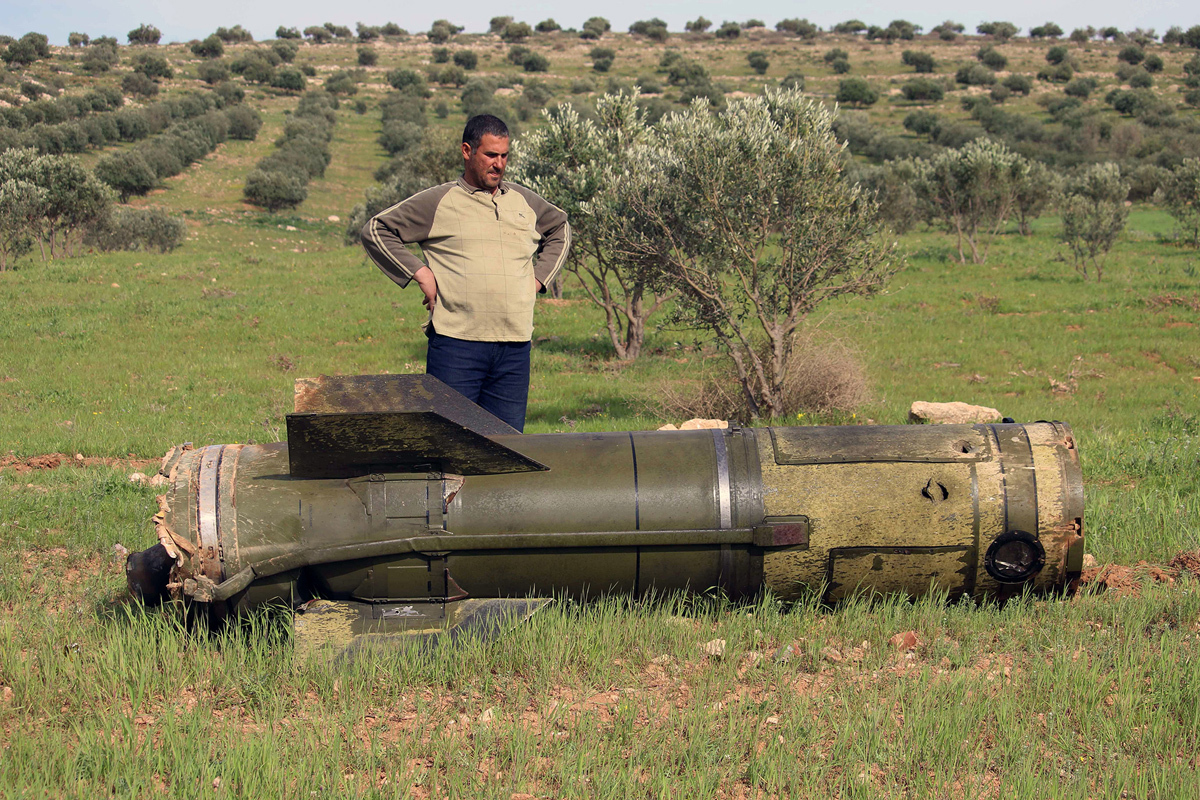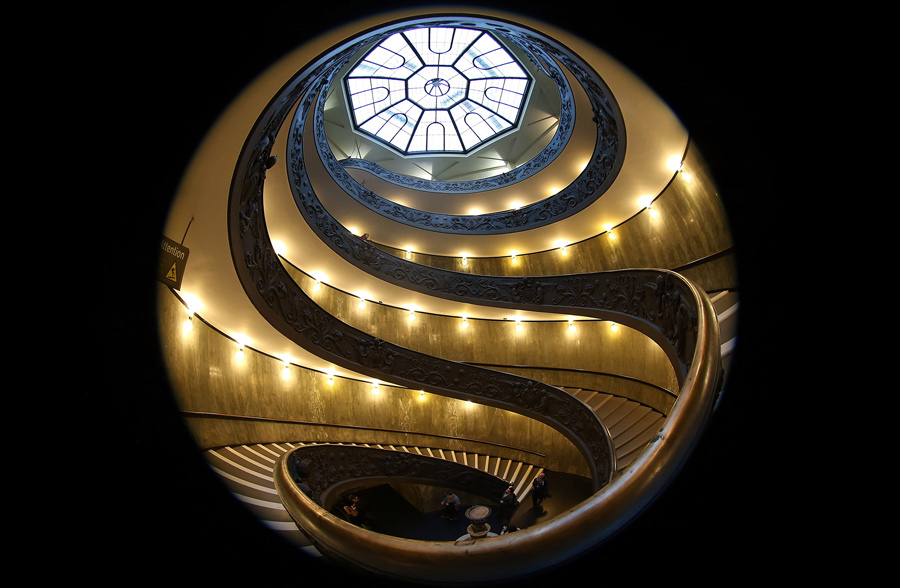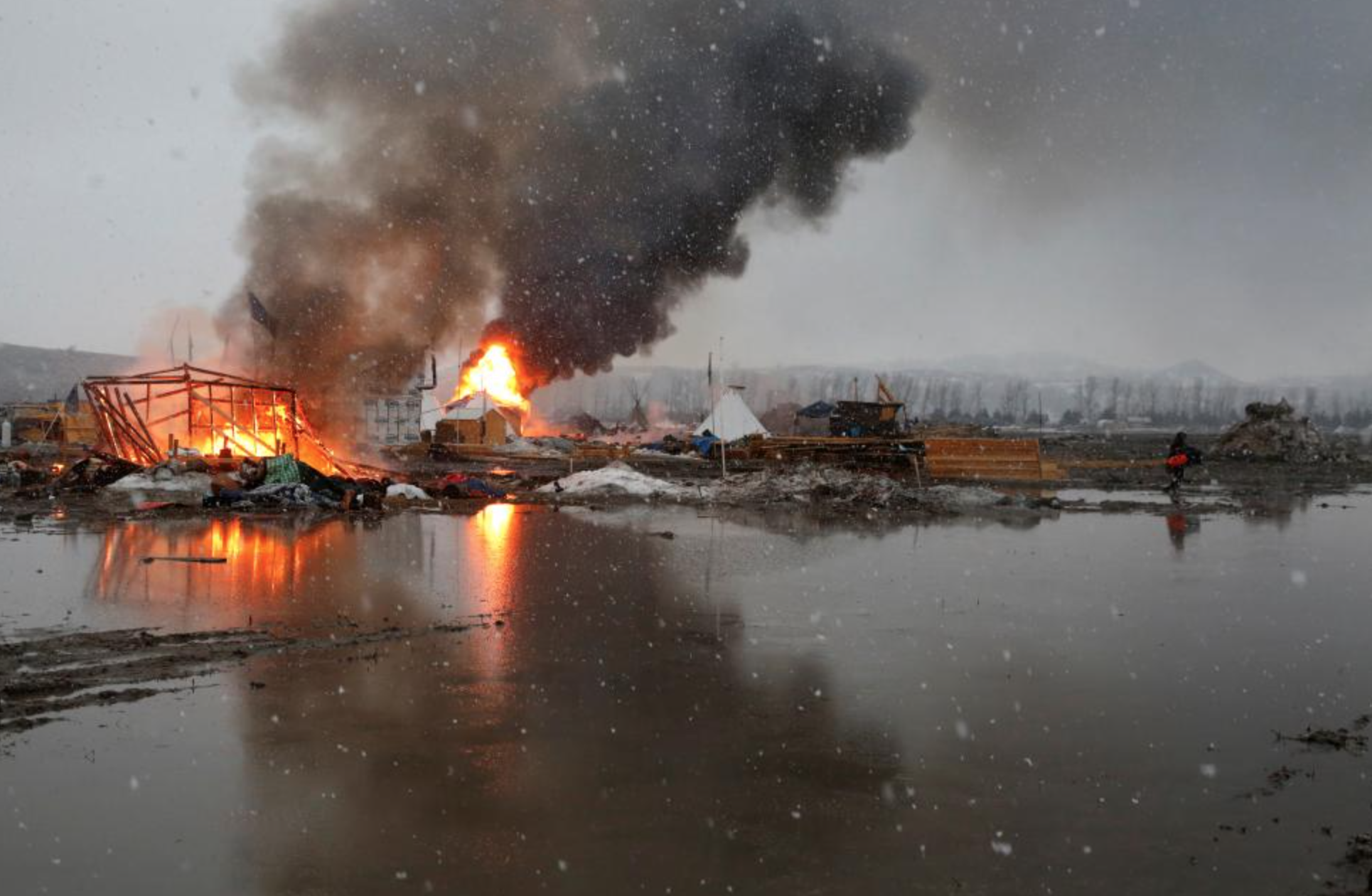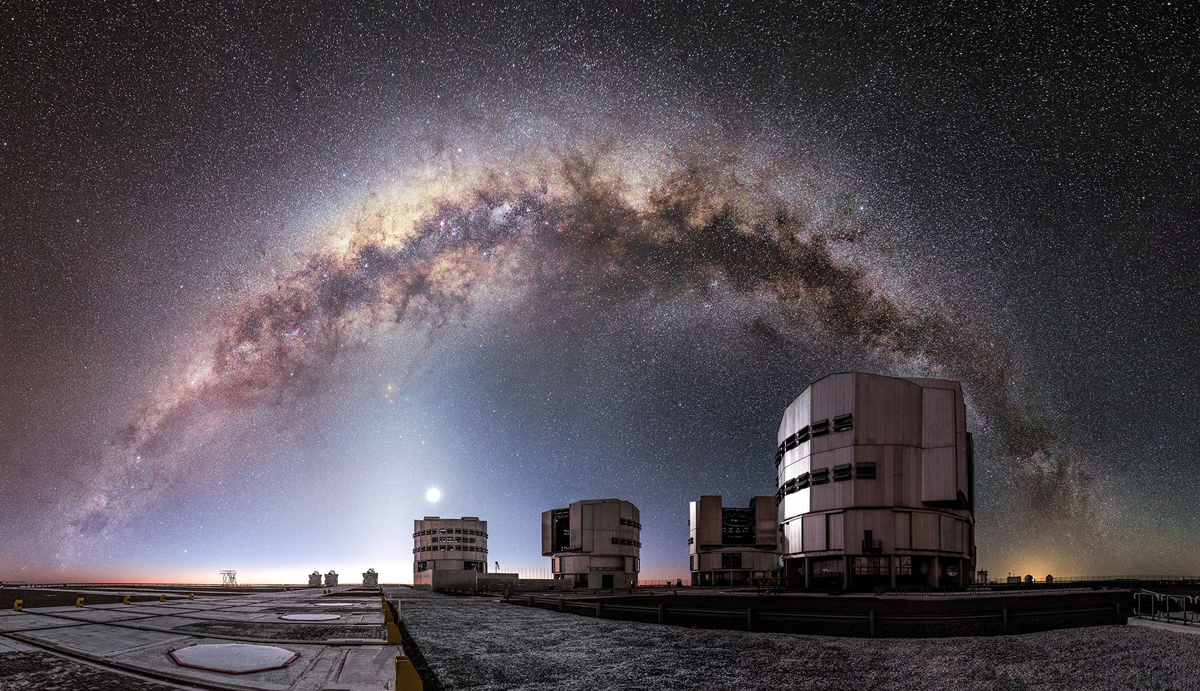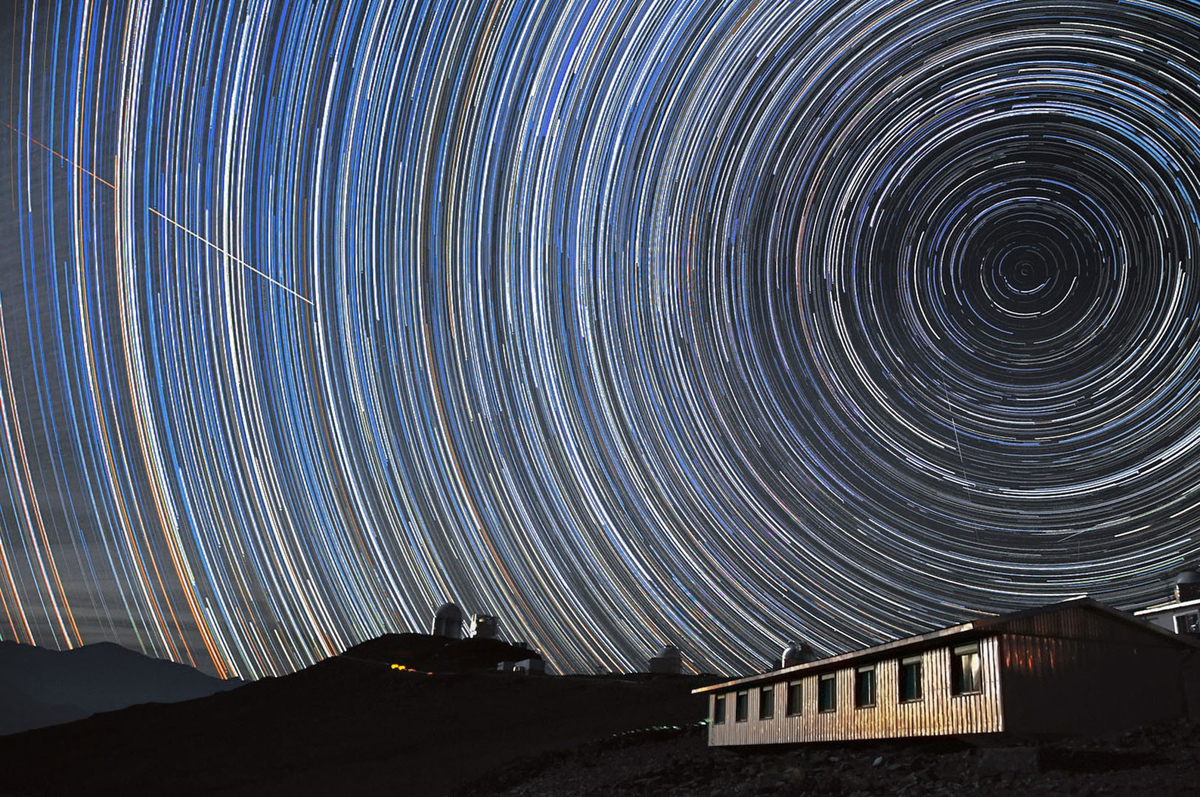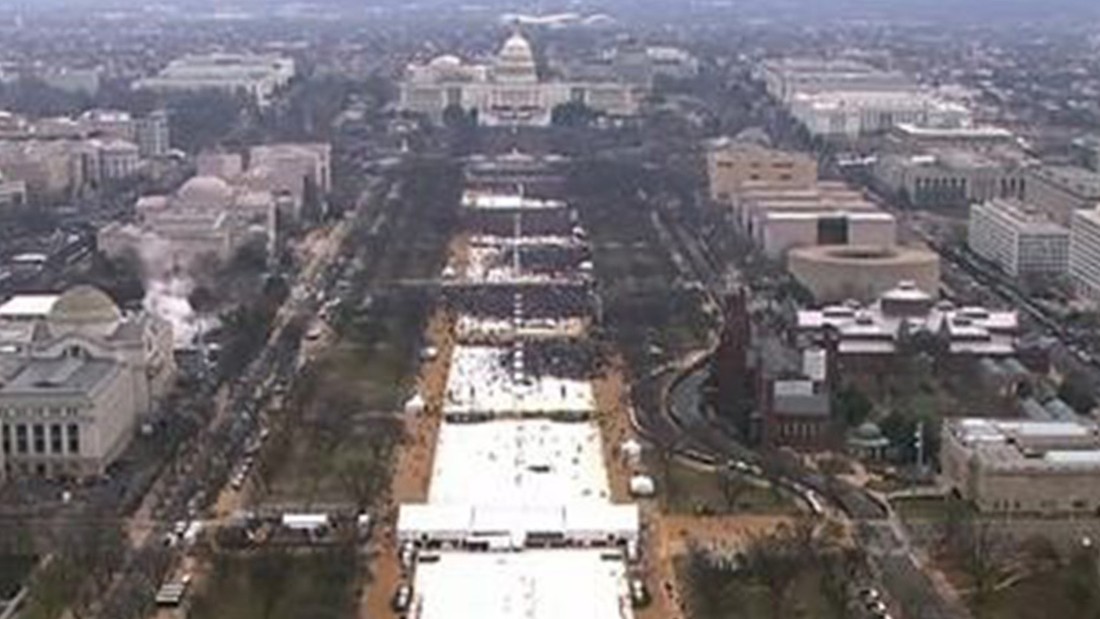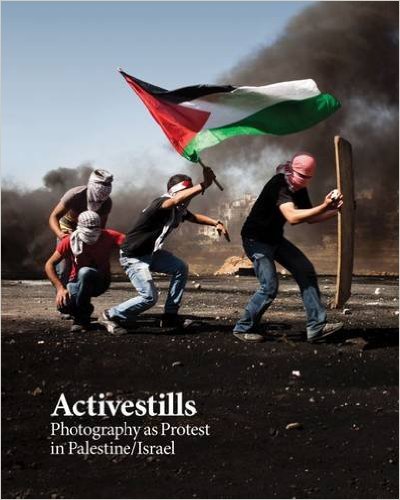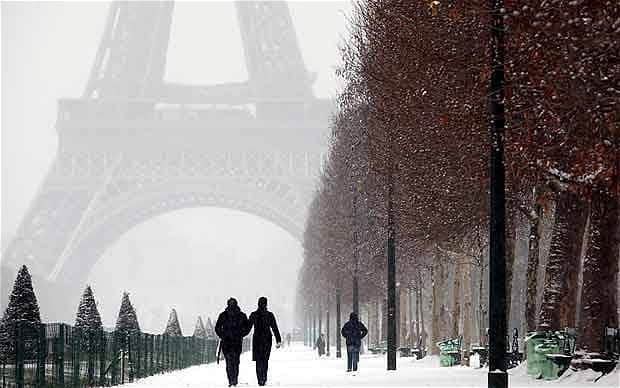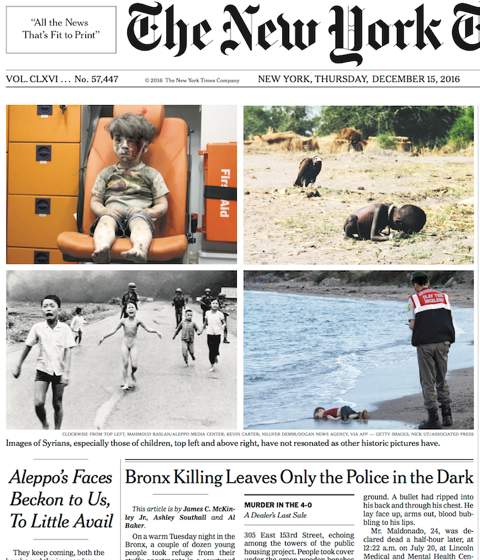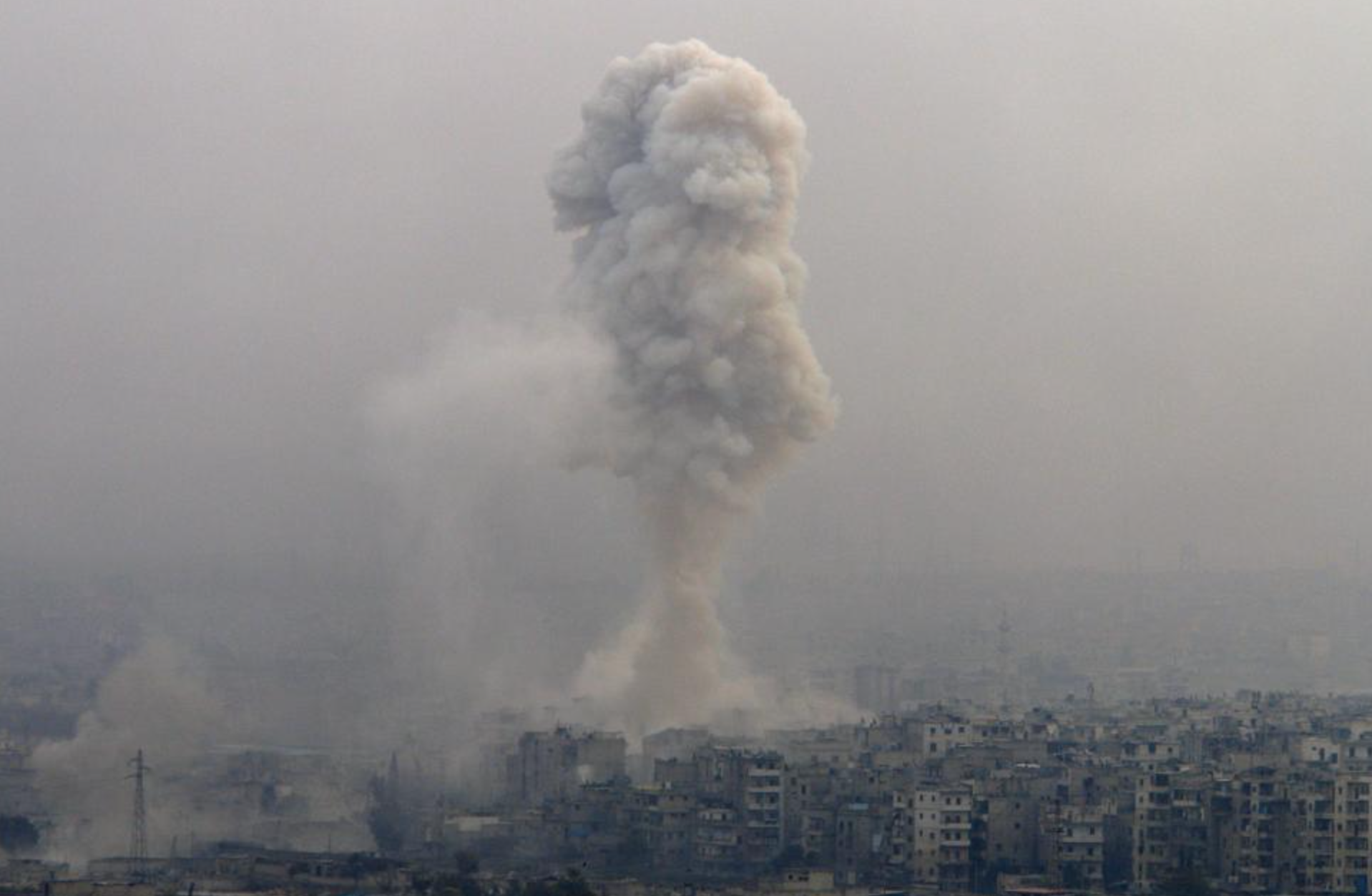This photo could be from a comedy skit, if the war in Syria were not so deadly. The image is an odd one in any case, so let’s consider why.
It’s definitely a war photograph–without a war you are not likely to find an unexploded missile on your property–but it is not a conventional war photograph. Instead of action, only stasis. Instead of destructiveness, an inert object. Instead of displacement, a strange addition to the landscape. Instead of strategy and tactics in real time, a banal chore that might not get done for awhile. It doesn’t even seem to be a good photograph: Instead of the decisive moment, only an indeterminate aftermath while time moves at a crawl. We might ask what that guy is thinking, but it’s not clear the missile is even his problem, and the answer doesn’t seem to matter much for us.
Which may be why it has some resonance as a joke. “Well , here’s another nice mess you’ve gotten me into,” or something like that. Were it to blow up, we might think of Wilie E. Coyote having ordered it from Acme. Or, “I survived the Syrian war for six years, and all I got was this lousy missile.” Of course, I don’t want to make light of the terrible suffering that has been the norm in Syria for all that time. The photo isn’t doing that either, but it is getting close to something uncanny, and that is why a comic undertone seems just out of hearing.
The image troubles because of how such terrible destructiveness has become so banal. Without it’s nosecone, the missile looks like a non-military object, but one having no exact purpose and perhaps still a bit sinister for that–as if something seen by Kafka’s K. It also looks like it could have been made in the 14th century, and so channels a distortion in historical time. Which war are we in, or has it been one continuous war? And instead of another marvel of modern technology, this failed weapon suggests war’s ancient brutality.
Except, perhaps, that it is an interlude. He is safe for the moment. The trees in the background have not been harmed. The photograph is showing us war from the inside, but in a way that opens to other possible worlds. Which is why the colors are so important and so ambivalent.
What strikes me perhaps most of all is how missile, man, and landscape share nearly identical shades of green and brown. Only his jeans provide a single, mute sense of a wider range. It’s as if land, people, and weaponry had been artfully coordinated–“that rug really tied the room together” (another bad joke, I know.) Of course, it’s not quite an accident: culture reflects geography, local materials and camouflage are to be expected in a civil war, etc. And war is not fashion and suffering is not funny. But the image is both familiar and odd enough to seem uncanny, if you think about it, and that’s where the photograph makes a statement.
Is that strange object a bizarre addition to the rural landscape, or part of it? Is war really the exception, or are we already too accustomed to it to avoid it? Are war and peace already so interwoven that we can’t imagine much beyond the same two alternating colors?
During a week of poison gas attacks on civilians and of cruise missiles arcing through the sky to destroy enemy materiel, there were many photographs documenting both war’s terrible destructiveness and the continued allure of projecting power. By contrast, a photograph that lacks action, trauma, and much else in the conventional iconography of war may have hit closest to the truth. War is woven into modern culture, which then is sure to perpetuate barbarism.
Or perhaps not. That odd duck of a failed missile is in the foreground, not the background, because war is not assumed (yet) to be normal. By getting past propaganda and terror, we can see war for what it is: ridiculous. Everything we make can be artfully coordinated because we make it–and so we can unmake it. A photograph of an inert, discarded weapon might be refusing the inevitability of violence.
So, instead of action, questions. As war is part of everyday life–there and here, wherever you are–it still is not easy to see or to understand. Like the man in the picture, we may need to ponder the strange objects it has placed before us, photographs not least among them. With help, and perhaps a joke or two, we might even do something to reduce war’s presence before it kills us.
Photograph by by Mohamad Abazeed/AFP. (There is another shot at Getty Images by the same photographer taken from a different angle that shows buildings, other people, etc.–and other colors. The image, not the place or event, is the most important source of the artistic statement.)
Cross-posted at Reading the Pictures.
